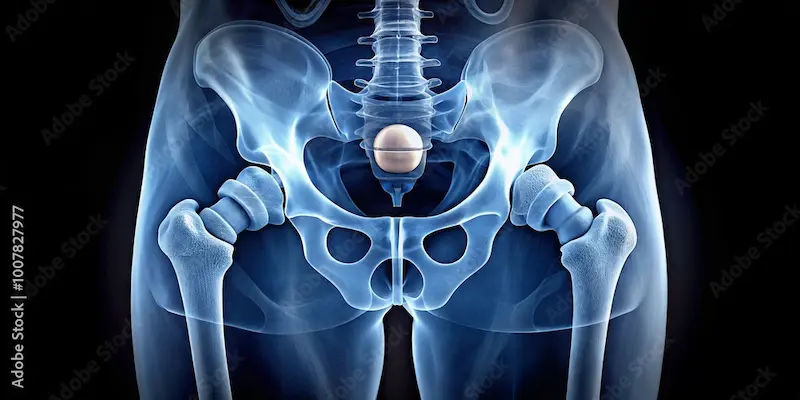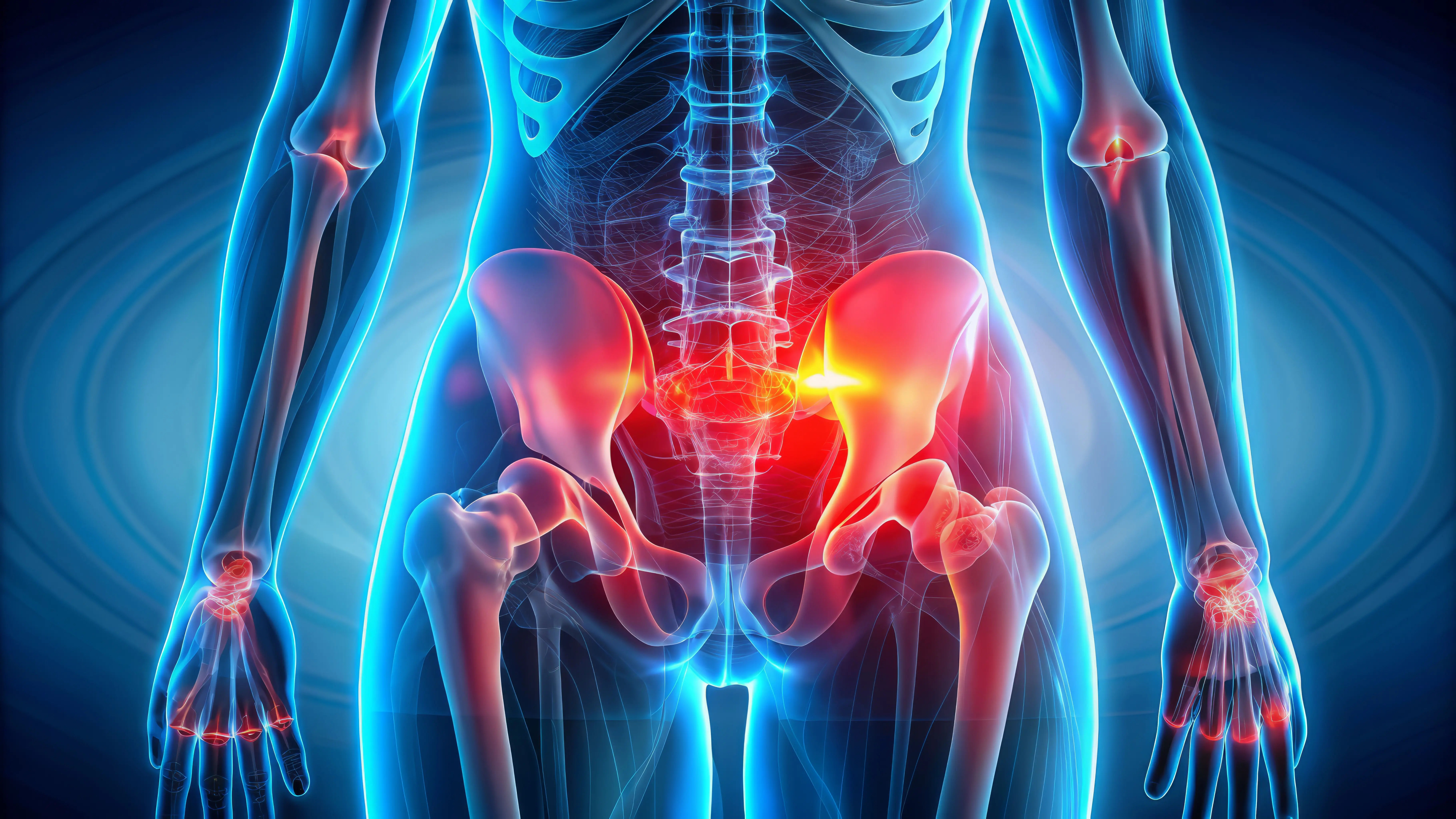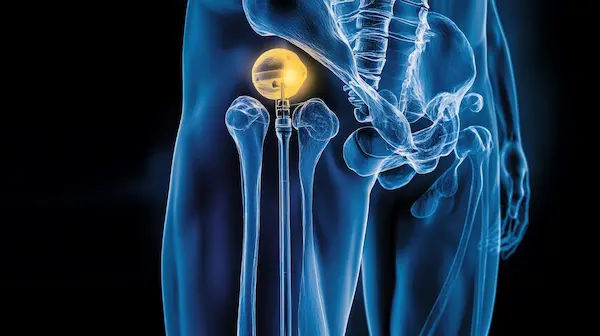Total Hip Replacement: Overview And Recovery
Learn about total hip replacement, including the procedure, benefits, recovery process, and how it helps restore mobility and improve quality of life.

Written by Dr. J T Hema Pratima
Reviewed by Dr. Rohinipriyanka Pondugula MBBS
Last updated on 15th Sep, 2025

Introduction
Is chronic hip pain stealing your freedom, making everyday activities like walking, climbing stairs, or even putting on your socks a monumental challenge? You're not alone. Millions of people worldwide suffer from severe hip arthritis and other degenerative conditions. When conservative treatments like medication and physical therapy no longer provide relief, a total hip replacement emerges as a highly successful solution to reclaim your life from pain. This procedure, one of modern medicine's most effective operations, involves replacing the damaged parts of your hip joint with artificial implants. But the journey involves more than just the surgery itself; it's about understanding the process, preparing thoroughly, and committing to recovery. This comprehensive guide will walk you through everything you need to know, from deciding if you're a candidate to navigating your hip replacement recovery timeline and returning to the activities you love with a new, pain-free joint.
What is a Total Hip Replacement?
A total hip replacement, also known as total hip arthroplasty, is a surgical procedure designed to relieve pain and restore function in a severely damaged hip joint. The goal is to remove the arthritic or injured parts of the joint and replace them with smooth, artificial components that replicate the natural, pain-free movement of a healthy hip.
Understanding Your Hip Joint Anatomy
Your hip is a classic ball-and-socket joint. The "ball" is the head of your femur (thigh bone), and the "socket" is the acetabulum, a curved part of your pelvis. In a healthy hip, these surfaces are covered with a layer of slick cartilage that allows the bones to glide against each other without friction.
Common Reasons for Needing a Hip Replacement
The most common reason for this surgery is osteoarthritis, where the protective cartilage wears down over time, leading to painful bone-on-bone contact. Other conditions include:
Rheumatoid arthritis
Osteonecrosis (avascular necrosis), where bone tissue dies due to lack of blood supply
Hip fractures
Congenital hip conditions
When pain becomes severe and constant, significantly limiting your mobility and quality of life despite other treatments, it may be time to discuss hip arthroplasty surgery with an orthopaedic specialist.
Consult Top Specialists for Personalised Tips
Are You a Candidate for Hip Replacement Surgery?
Deciding to undergo surgery is a significant decision made collaboratively between you and your doctor.
Signs and Symptoms That Suggest You Need Surgery
Not everyone with hip pain needs a replacement. Key indicators include:
Persistent Pain: Pain that continues while resting, day or night.
Stiffness: Difficulty putting on shoes and socks or lifting your leg.
Limited Mobility: Trouble walking, climbing stairs, or getting in/out of chairs.
Failed Conservative Treatments: Little to no improvement with anti-inflammatory drugs, physical therapy, injections, or lifestyle changes.
Preparing for Your Hip Replacement Surgery
A successful outcome begins long before you enter the operating room. Proper preparation is crucial.
Pre-operative Assessments and Medical Clearance
You will undergo several tests, including blood work, an ECG, and a physical exam, to ensure you are healthy enough for surgery. This is the time to discuss all your medications with your doctor.
Pre-hab: Exercises to Strengthen Your Body Before Surgery
"Pre-hab" involves exercises to strengthen your upper body (for using crutches) and the muscles around your hip and core. Stronger muscles lead to a faster and easier recovery post-surgery.
Preparing Your Home for a Smooth Recovery
Make your home safe and accessible:
Remove tripping hazards like loose rugs and electrical cords.
Set up a recovery area on the main floor with essentials nearby.
Install safety bars in the shower and near the toilet.
Consider a raised toilet seat and a shower chair.
Prepare meals in advance or arrange for help.
Get Your Health Assessed
The Total Hip Replacement Procedure Explained
Understanding the surgery can help alleviate anxiety.
Types of Implants: Materials and Fixation Methods
Implants are made from durable, biocompatible materials. Common combinations include a metal ball with a plastic socket, ceramic-on-ceramic, or metal-on-metal. The implant can be cemented into place or press-fit, allowing your own bone to grow into it (uncemented).
Surgical Approaches: Posterior, Anterior, and Minimally Invasive
The surgeon can access the hip joint from different directions. The posterior approach (from the back) is most common. The anterior approach (from the front) is muscle-sparing and may lead to a faster initial recovery and lower dislocation risk, but it is technique-sensitive. Minimally invasive techniques use smaller incisions to reduce tissue damage.
The Road to Recovery: Your Hip Replacement Recovery Timeline
Recovery is a process with distinct phases. This hip replacement recovery timeline is a general guide; individual experiences will vary.
The First 24-48 Hours: Hospital Stay and Pain Management
You'll be encouraged to sit up and walk with a walker within a day of surgery. Pain will be managed with multi-modal analgesia. A physical therapist will teach you how to move safely.
The First 6 Weeks: Protecting Your New Hip and Early PT
This phase focuses on healing and preventing dislocation. You'll use a walker or crutches and follow strict dislocation precautions (like avoiding bending past 90 degrees). Home physical therapy is critical for regaining strength and mobility.
6 Weeks to 3 Months: Regaining Strength and Mobility
You'll typically transition off walking aids. Physical therapy intensifies to improve gait, balance, and strength. Most people return to sedentary jobs around this time.
3 Months and Beyond: Returning to Your Active Life
You can gradually return to most low-impact activities like swimming, cycling, and golf. Pain continues to diminish, and strength improves. Full recovery can take 6-12 months.
Physical Therapy and Rehabilitation: The Key to Success
PT is not optional; it's essential for a successful outcome. Your therapist will guide you through exercises to reduce swelling, improve circulation, and restore function. Consistency with your prescribed exercises at home is just as important as the sessions themselves.
Potential Risks and Complications of Hip Arthroplasty
Like any major surgery, THR carries risks, though serious complications are uncommon. These include:
Infection
Blood clots (Deep Vein Thrombosis)
Dislocation
Leg length discrepancy
Implant loosening over time
Your medical team will take extensive precautions, such as administering antibiotics and blood thinners, to minimise these risks.
Life After Total Hip Replacement: Long-Term Outlook
The results are typically life-changing. Over 95% of patients report dramatic pain relief and improved ability to perform daily activities.
Activity Guidelines: What You Can and Can't Do
You are encouraged to stay active with low-impact exercises. Most surgeons advise against high-impact activities like running or basketball to protect the longevity of your implant.
The Lifespan of a Hip Replacement Implant
Today's implants are durable. Over 90% of modern hip replacements continue to function well after 15 years, and many last 20-25 years or more.
Conclusion
Choosing to undergo a total hip replacement is a decision to invest in your quality of life. While the journey from chronic pain to full recovery requires patience, dedication, and hard work, the reward is immense: the chance to move freely without pain, to regain your independence, and to return to the activities that bring you joy. By understanding the procedure, preparing your mind and home, and diligently following your rehabilitation protocol, you can navigate this path successfully. Remember, you are not alone; your surgical team, physical therapists, and support network are there to guide you every step of the way. If you are experiencing debilitating hip pain, take the first step today by consulting with an orthopaedic specialist to see if this life-changing procedure is right for you.
Consult Top orthopedics
Consult Top Specialists for Personalised Tips

Dr. Keshav Digga
Orthopaedician
14 Years • MBBS, MS Orthopaedics, FIASM, FIMISS
Kolkata
DIGGA HEALTHCARE, Kolkata

Dr. Hemant Bansal
Orthopaedician
10 Years • MS Ortho (BHU), DNB (Orthopaedics), FPAT (AIIMS), FAOT (USA), FAA (Austria)
Gurugram
APOLLO SUGAR CLINICS GURUGRAM, Gurugram

Dr. Sharath K R
Orthopaedician
13 Years • MBBS, MS, DNB (Orthopaedics)
Bengaluru
Apollo Hospitals Jayanagar, Bengaluru

Dr. Manoj Dinkar
Orthopaedician
15 Years • MBBS, Dip (Orthopaedics)
New Delhi
THE DOCTORS NESST, New Delhi

Dr. Rahul Puri
Orthopaedician
15 Years • MBBS, MS
Bengaluru
Apollo Hospitals Jayanagar, Bengaluru
(50+ Patients)
Consult Top orthopedics

Dr. Keshav Digga
Orthopaedician
14 Years • MBBS, MS Orthopaedics, FIASM, FIMISS
Kolkata
DIGGA HEALTHCARE, Kolkata

Dr. Hemant Bansal
Orthopaedician
10 Years • MS Ortho (BHU), DNB (Orthopaedics), FPAT (AIIMS), FAOT (USA), FAA (Austria)
Gurugram
APOLLO SUGAR CLINICS GURUGRAM, Gurugram

Dr. Sharath K R
Orthopaedician
13 Years • MBBS, MS, DNB (Orthopaedics)
Bengaluru
Apollo Hospitals Jayanagar, Bengaluru

Dr. Manoj Dinkar
Orthopaedician
15 Years • MBBS, Dip (Orthopaedics)
New Delhi
THE DOCTORS NESST, New Delhi

Dr. Rahul Puri
Orthopaedician
15 Years • MBBS, MS
Bengaluru
Apollo Hospitals Jayanagar, Bengaluru
(50+ Patients)
More articles from Hip fracture
Frequently Asked Questions
How long will I be in the hospital after a hip replacement?
Most patients stay in the hospital for 1 to 3 days, depending on their progress with physical therapy and pain management. The trend is increasingly toward outpatient or same-day discharge for selected patients.
What are the permanent restrictions after a total hip replacement?
Most patients have no permanent restrictions after full recovery, but surgeons generally recommend avoiding high-impact sports (e.g., running, jumping) to prevent premature wear of the implant. Low-impact activities like walking, swimming, and cycling are encouraged.
How painful is the recovery from hip replacement surgery?
Pain is expected initially but is effectively managed with a combination of nerve blocks during surgery and medications afterward. The pain decreases significantly within the first few weeks and is far less than the chronic arthritic pain patients experienced before surgery.
When can I drive after my surgery?
If you had surgery on your left hip and drive an automatic car, you may drive as soon as you are off narcotic pain medication, often around 2-4 weeks. For right hip surgery, it typically takes longer, around 4-6 weeks, to ensure you can safely slam on the brake.
What is the best way to prevent blood clots after surgery?
Prevention is multi-faceted: you will likely be prescribed blood-thinning medication, encouraged to wear compression stockings, and instructed to perform ankle pump exercises frequently to keep blood circulating. Early and frequent walking is the best prevention.





